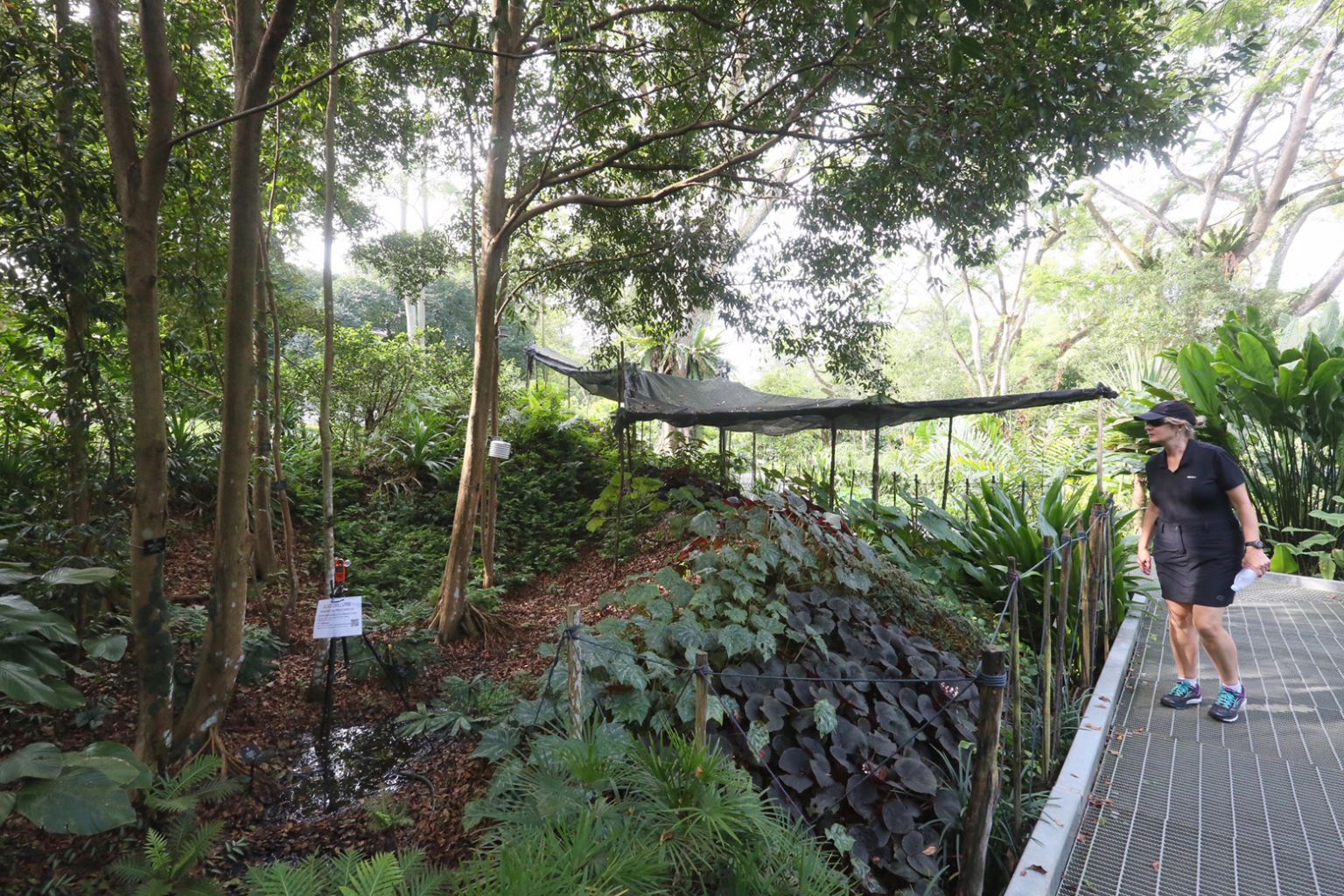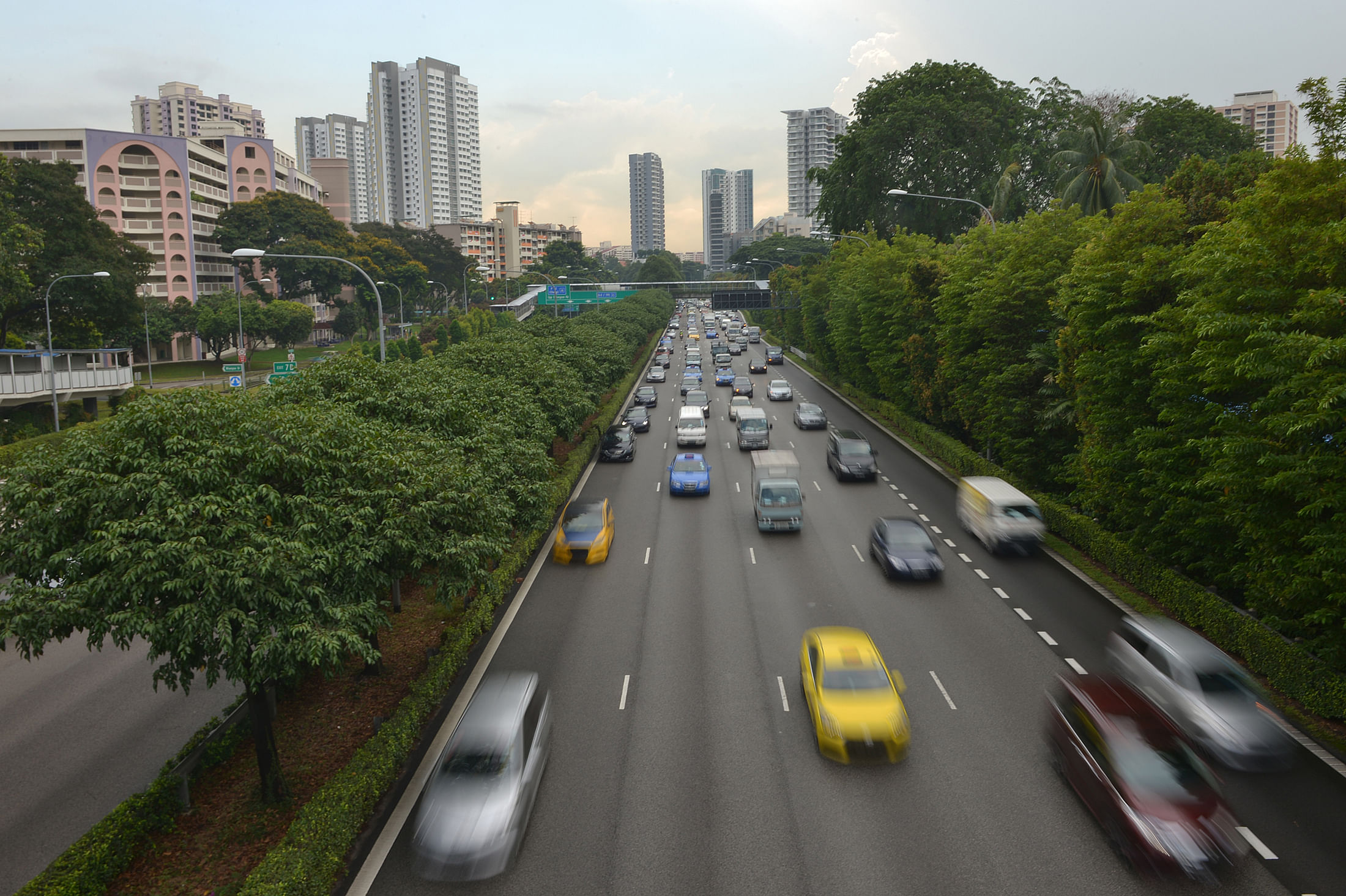Is it illegal to pluck leaves from a roadside tree? 7 things you should know
Sign up now: Get ST's newsletters delivered to your inbox

A Bangladeshi worker was initially fined for plucking the leaves of a tree at the Singapore Botanic Gardens earlier in January.
PHOTO: SHIN MIN DAILY NEWS
Ng Huiwen
Follow topic:
SINGAPORE - A foreign worker who was caught plucking the leaves of a tree at the Singapore Botanic Gardens received a warning by the National Parks Board (NParks) on Monday (Jan 30) instead of being fined.
This was after the Bangladeshi worker's employer successfully appealed to the board on his behalf, as photos of a notice of offence issued to him made rounds online. The composition fine amount was $2,000.
Earlier this month, the worker had plucked the leaves of a Syzygium myrtifolium tree, also known as the Kelat Oil, Kelat Paya or Red Lip tree.
Here are some frequently asked questions about plucking leaves or fruit from plants and trees in Singapore:
1. I came across an interesting plant while visiting a public park. Can I take parts of it as keepsake?
Damaging or removing plants or parts of plants from parks and gardens is not permitted, NParks has said. Under the Parks and Trees Act, it is an offence to cut, collect or displace any plant in these areas.
2. What is the punishment for doing so?
Offenders can be fined up to $5,000. In one case, an offender who removed two critically endangered Kopsia singapurensis saplings from a park was prosecuted in court and fined $3,000.
The severity of the punishments may vary, depending on where the offence was committed and other mitigating circumstances.
3. Does the law apply only to trees and plants in public parks? What about roadside trees?

Besides national parks and nature reserves, the Act also provides for planting, maintenance and conservation of trees and plants in tree conservation areas and heritage road green buffers. Most roadside trees, which are typically in areas managed by NParks, also fall under the Act.
4. A fruit has fallen from a nearby tree in my housing estate. Can I pick it up?
The public is not allowed to harvest from state land managed by the Singapore Land Authority (SLA) or NParks, according to an ST report in 2017. This is unlike countries overseas, such as Germany, where one can pluck fruits or plants on public land.
Collecting or keeping fruits that have fallen naturally to the ground is also prohibited.
5. But the fruit would go to waste if it is left to rot on the ground. Why can't I take it home?
NParks discourages people from taking the fruit themselves because they may not do so properly and could end up damaging the trees, according to an ST report in 2011.
People may throw rocks or use bamboo poles to dislodge the fruit, which can tear the tree's bark and expose it to viruses.
Some fruit is also left unplucked for the native animal population. For example, the Asian glossy starling, a small bird, relies on soft fruits such as mango and papaya.
6. What can I do if I want to collect parts of a plant for special purposes?
Individuals and groups who wish to collect seeds, cuttings or fruits for research, education, propagation, charity or other purposes should approach the relevant authorities for permission. This may include NParks, SLA or the Housing Board. NParks assesses a request on a case-by-case basis.
7. How many such cases did NParks see in 2017?
Last year (2017), NParks issued 21 notices for the cutting, collection or displacement of plants within public parks.

